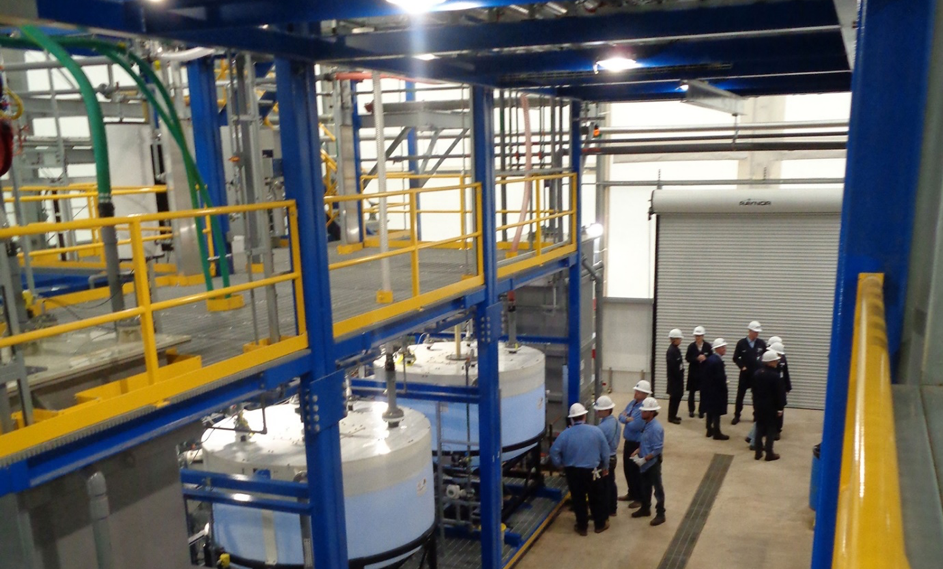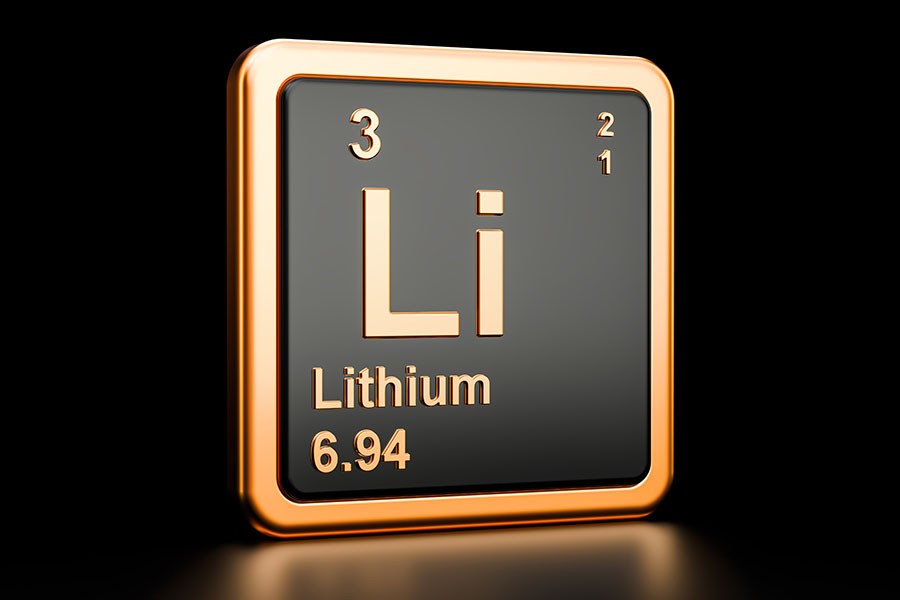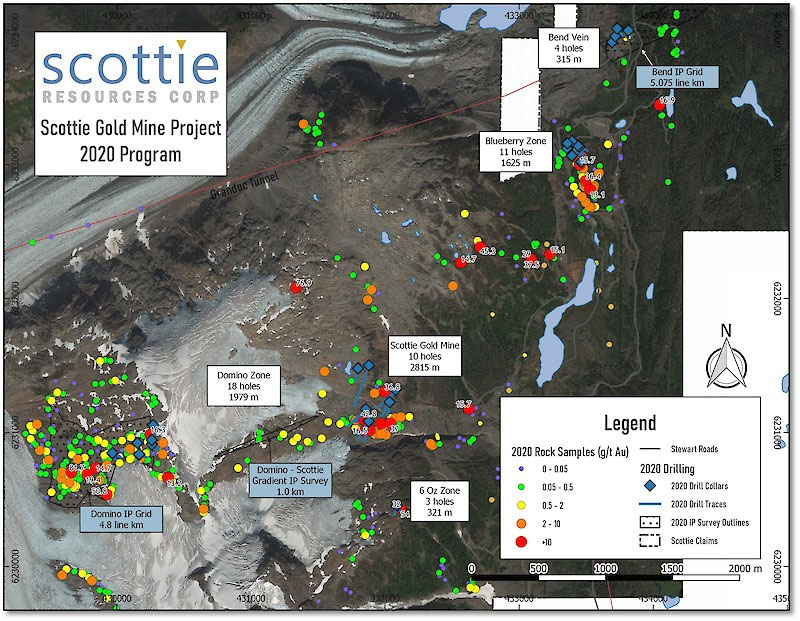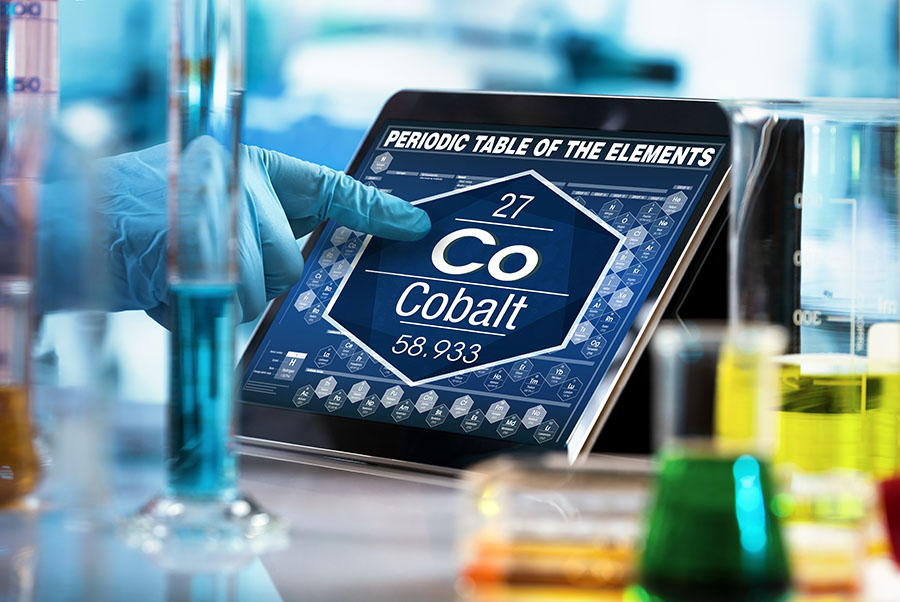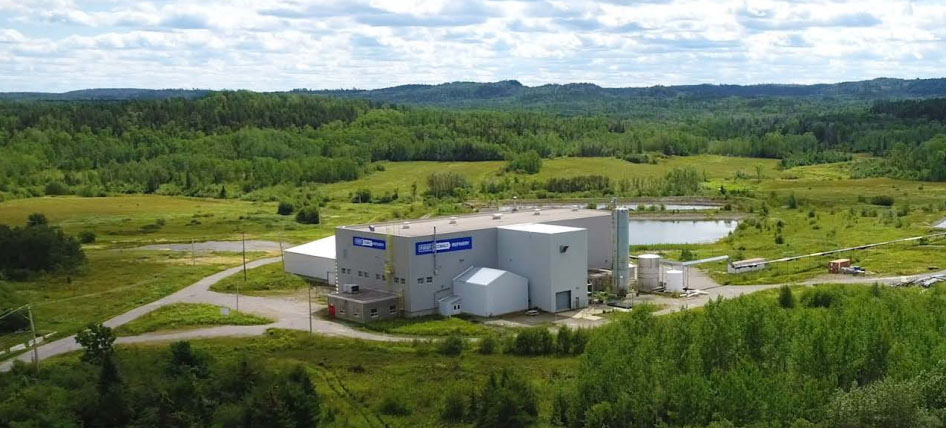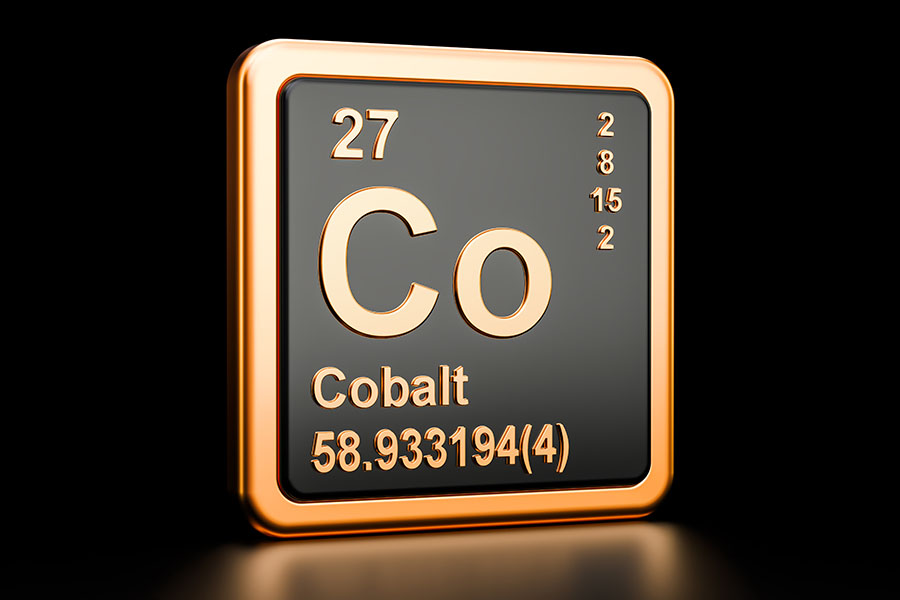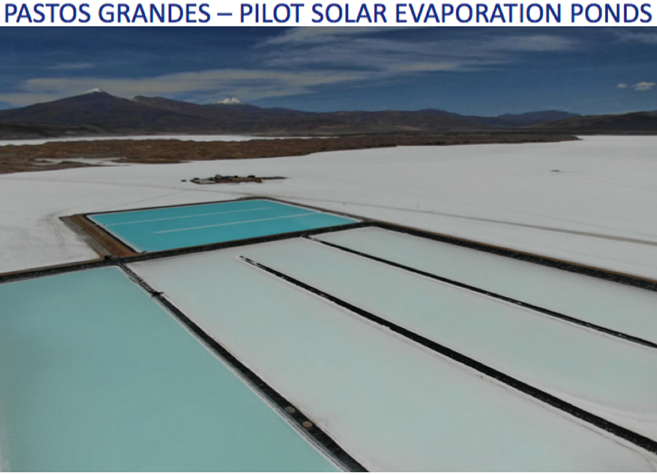TICKERS: AVL; AVARF, CLQ; CLQMF, COPX, GLDX, LIT, SIL, URA, , ROC, ROC, WLCDF
Bruno del Ama: Powered by Lithium
Interview
Source: Brian Sylvester of The Energy Report (11/9/10)
 Cell phones, laptops, mp3 players—they are all powered by lithium. Bruno del Ama, the portfolio manager of New York-based, exchange traded fund issuer Global X Management, has recently launched an ETF targeting lithium companies for just this reason. In this exclusive interview with The Energy Report, del Ama discusses why sizeable deposits of lithium just now being developed may not be enough to keep up with the demand generated by consumer electronics and the emerging electric vehicles industry over the next decade.
Cell phones, laptops, mp3 players—they are all powered by lithium. Bruno del Ama, the portfolio manager of New York-based, exchange traded fund issuer Global X Management, has recently launched an ETF targeting lithium companies for just this reason. In this exclusive interview with The Energy Report, del Ama discusses why sizeable deposits of lithium just now being developed may not be enough to keep up with the demand generated by consumer electronics and the emerging electric vehicles industry over the next decade.
Bruno del Ama: Lithium is of huge interest today for a number of reasons. The primary reason is that demand for lithium is growing by about 10% a year. Most of that growth is fueled by lithium-based batteries used in small consumer appliances, cell phones and laptops, as well as other portable electronic devices.
What really hasn't been factored into that growth is lithium-ion batteries used in electric vehicles. Lithium-ion batteries are the best technology and all new hybrid and electric vehicles are adopting it. The amount of lithium that's required for electric vehicles is much, much larger than what is needed for a laptop, for example.
That growth hasn't been factored into a market that's already growing very quickly. We expect the electric vehicle and hybrid market to grow very significantly from where it is today, which is basically non-existent. That should have a tremendous impact on the demand for lithium
TER: But why form an ETF for lithium?
BDA: It's basically impossible to invest in lithium today. There's no futures market for lithium. There are no other investable products for lithium. The only way to invest in lithium today, or until these products are available, is to buy individual stocks in lithium mining or processing companies. What this ETF does is provide an easy package for investors to get access to the full lithium market.
TER: What type of investor is investing in the Lithium ETF?
BDA: At one end of the spectrum, we've received inquiries from some of the largest institutional investors. At the other end of the spectrum, any investor with a brokerage account can buy into the Lithium ETF with as little as $20. When it first came to market in July, shares in the fund were at about $15 and it's trading at over $20 a share now. The return has been incredible in a short period of time.
TER: How much is lithium per ton currently?
BDA: Lithium was trading at about $2,000 per ton until 2004. The price has more than tripled to about $6,500 per ton since then.
TER: That growth is obviously being stoked as lithium technology replaces existing technologies, but what if lithium technology is supplanted by something else?
BDA: Lithium is currently the best technology for batteries. It's the best technology partially because of the characteristics of the metal. It's the lightest metal in the periodic table while storing three times the energy density of competing materials.
We don't see developments that would replace lithium in energy storage. But we do see developments that would replace the anode component of the lithium-ion molecule, which are typically carbons, that would eliminate the heaviest part of the material. There is already R&D looking into lighter lithium batteries like the lithium-air battery, for example, which takes advantage of freely-available oxygen in the environment and eliminates anode storage entirely in the battery.
TER: Are there any other growth aspects to the lithium story?
BDA: Another aspect that is having a big impact on demand is storage for the alternative energy industry. For example, wind farms. Wind can blow at any time during the day. It's not very predictable. When that energy is applied to the electric grid, it's wasted if it's not consumed quickly. There's significant investment into storage of alternative energies, be it solar, wind or hydro. There's also a lot of research into "smart" electric grids where a big battery bank is set up to store the electricity that we are producing but not using.
TER: There are about 20 companies in the index that are tracked by your Global X Lithium ETF. How did you select those 20 companies?
BDA: The selection is done by an independent index provider, Structured Solutions, which maintains what is currently the only lithium index in the world. The company will continually update the index to reflect new companies in the space over time. We would expect the index to expand from its current 20 companies to include additional mining or battery-producing companies in the future.
The index is meant to reflect the full life cycle of lithium, from lithium miners and producers to the deployment of lithium where most of the growth is coming from: lithium-ion battery producers.
The world production of lithium is dominated by three companies: Sociedad Quimica y Minera de Chile SA (NYSE:SQM; SN:SQM), FMC Lithium Corporation (NYSE:FMC) and Rockwood Holdings, Inc (NYSE:ROC).
This is a global fund. There are a number of junior lithium mining companies in the U.S. and Canada. A lot of the lithium developments today are in Latin America. There are also lithium-ion battery producers in the U.S., Japan and Europe.
TER: How often do you rebalance the fund? What parameters do you use?
BDA: Since it tracks an index, we rebalance as the index rebalances, which is semi-annually, at the end of November and May.
TER: Can you tell us how it is determined that a new equity is going to make it into the index?
BDA: Basically these indexes will include all of the lithium mining companies that are above a certain size as well as those that mainly deploy lithium, which are the lithium-ion battery producers. So if, for example, some private mining or start-up mining company becomes public or an existing publicly traded company crosses the minimum liquidity or minimum size threshold, they will be included in the index. And similarly with regards to the lithium-ion battery producers—if there's a new IPO, if there's a stock split, and the company splits in two, for example, then they both qualify. Or let's say they do a spin-off of just the lithium business, then that will probably remain in the index and the part that's not focused on lithium will come out. So, basically, they fully cover the lithium market and any new publicly traded company that comes in will come into the index.
TER: A private company, Talison Lithium Ltd. (TSX:TLH), that became a public company by merging with Salares Lithium in July, isn't in your fund. From what I've read, it appears to be one of the largest, if not the largest, producers of lithium. So, that's why I was surprised when I looked at your holdings and did not see it in there. But because you rebalance twice a year, it probably hasn't moved up the ranks yet, right?
BDA: If it's large enough and liquid enough and focused on lithium, it will be added, yes.
TER: Another company that I am familiar with is Western Lithium USA Corp. (TSX.V:WLC;PK:WLCDF), and that isn't on the index as well. Are you familiar with them?
BDA: I think I may have seen Western Lithium on the list of companies considered for inclusion in the index. So, if they didn't make it, it's not because the index company is not aware of this company, but because they didn't meet the criteria for some reason. So, Western Lithium may have been either too small or too illiquid, but all of these companies are becoming larger and more liquid quickly. So, it is my expectation that Western Lithium will come into the index at some point.
TER: About 60% of companies in the Global X Lithium ETF are foreign companies. Does that reflect better opportunity for the lithium market abroad or a dearth of American companies with strong lithium-based assets?
BDA: It reflects the composition of the lithium industry globally. This is a global fund that's meant to reflect the full lithium industry wherever it may be located, and the reality is that a lot of the global lithium industry is located outside of the U.S.
TER: Pure-play lithium companies are difficult, if not impossible, to find. Could you tell us about some junior mining companies with some exposure to lithium that are among your ETFs holdings?
BDA: Some of the components would include companies such as Lithium One Inc. (TSX.V:LI), Canada Lithium Corp. (TSX:CLQ; OTCQX:CLQMF) or Avalon Rare Metals Inc. (TSX:AVL; OTCQX:AVARF). These are specialized junior mining companies that have a significant lithium component. They are in the development stage of prospecting and setting up mines and developing new mining processing.
The easiest lithium mining processing is where the weather basically does the work for you: a brine operation based on an evaporation process used in places like Chile where time and the sun have done the work for you. Some of these companies are looking into spudomene mining as well. It's more expensive, but it allows mining of lithium resources in places where the weather may not be as conducive.
TER: Avalon has a big rare earth project in Canada's Northwest Territories. In an operation like that, do companies typically send the lithium to market separated from the rest of the metals?
BDA: It typically goes to market separated from the magnesium, which is the most common metal mixed in with lithium extracts, and is typically sold and price-quoted as lithium carbonate. All of the lithium trading is currently done over-the-counter by the industrial companies that use lithium.
With the expected growth in electric vehicles and the scarcity of lithium providers, a lot of car manufacturers like Toyota, Nissan and Ford are entering into direct off-take agreements with these mining companies. They are entering into one-off agreements to make sure that they secure long-term availability of lithium before they invest billions of dollars into development of full electric vehicle brands and cars.
TER: Are there any estimates about how much lithium Avalon's Nechalacho project could produce on an annual basis?
BDA: It's actually in the early stages of development, so they haven't published specific projections on volume. The company does point out that rare earths are also a big component of that project and thus it is not a pure-play lithium company.
TER: Would Canada Lithium be something more akin to that?
BDA: Canada Lithium is much more of a pure-play lithium company. It also has a more developed lithium mine. It has specific projects and estimates with regards to the production and is clearly a company that fits very nicely in the ETF.
TER: What is their proposed production?
BDA: It has an open-pit mine in Quebec called Val d'Or. The processing plant is capable of producing about 43 million pounds of battery-grade lithium carbonate by 2012, according to their estimations. That would place them as a significant player within the lithium industry.
TER: What is the annual global demand at this point for lithium?
BDA: Global demand right now is in excess of 27,000 metric tons. If Canada Lithium's Val d'Or project were to come into production, it would certainly go a long way towards meeting some of the demand.
TER: Does it make sense to bring the project on at full capacity at the beginning? It seems like it would flood the market.
BDA: Current predictions from major investment banks on new supply and demand indicates that the market will be fully served over the next 8 to 10 years. Depending on the speed of evolution and adoption of electric vehicles, we'll be in a significant deficit starting 8 to 10 years from now.
TER: That will obviously affect the price of lithium. How could that impact the ETF?
BDA: Price has an impact on performance because the ETF has exposure to the companies that produce lithium and sell lithium. The more expensive the commodity, the higher the margins of companies in the fund. However, there doesn't need to be increases in lithium prices to have high returns through the ETF. These companies can produce a higher profit just through the increasing demand for the commodity at the same profit margin. Any increases in margin from there would mean even higher returns as it not only increases earnings but also the price-to-earnings ratio.
TER: Can you tell us about FMC, SQM and Rockwood Holdings in terms of their exposure to lithium and their role in the market?
BDA: Their role in the market is massive. Those three companies account for in excess of 70% of the lithium supply. They are, however, diversified mining companies. Lithium may account for less than one-third of their profits.
TER: They're mining lithium as a byproduct?
BDA: They started as potash producers and lithium was a byproduct of potash. As demand for lithium increased over time, and as the prices for lithium started to increase, it became more of a strategic mineral that they're extremely focused on growing the production of. The lithium part of their business has the highest margins for all three companies. It's also the fastest growing part of the business for all three. It's expected that lithium will be a much, much bigger proportion of their revenues within a decade.
TER: What are some parting thoughts on the lithium market?
BDA: To some extent, it's like buying an option. You have a market that is already growing rapidly without taking into account any impact from electric vehicles or energy storage.
Look at all the iPads and iPhones—that's a market that's expanding quickly and all of those technologies are using lithium-ion batteries. Any growth that materializes from electric vehicles will just be gravy on top of that. The potential from these markets could have a large impact on growth for lithium.
The ETF allows investors to buy into a market that's already growing very quickly and to have an option for the market to expand at a much more dramatic pace if the electric vehicle market ends up becoming a widespread reality.
TER: Are there any other commodity ETFs on the horizon for Global X?
BDA: We currently offer Global X Copper Miners ETF (NYSE:COPX). It has had incredible returns over the last three months. Returns from this fund have been driven by industrial growth and demand from China.
We also offer the Global X Silver Miners ETF (NYSE:SIL). It's a basket of all the largest and most-liquid silver mining companies around the world.
We're looking to bring two new ETFs to market this week, including Global X Gold Explorers ETF (NYSE:GLDX). This will be comprised of early-stage exploration companies and pre-cash-flow gold companies. To some extent, we think about this product and this market as the venture capital of gold.
We're also looking to bring the Global X Uranium ETF (NYSE:URA) to market this week. This will offer access to the largest uranium mining companies around the world.
TER: Very good Bruno. Thank you for your time.
Bruno del Ama is the co-founder and CEO of New York-based asset manager Global X Funds. The company is dedicated to developing innovative Exchange Traded Funds (ETFs) focused on emerging markets, global commodities and clean tech resources. Global X Funds has over $1 billion in assets under management and has been ranked by BlackRock as the fastest growing ETF provider YTD. Previously, Mr. del Ama served as head of operations in the structured products business at Radian Asset Assurance. Prior to that, he was a senior consultant at Oliver Wyman, advising leading financial services firms in a range of strategy matters. Mr. del Ama, a CFA charter holder, received his MBA from the Wharton Business School.
Want to read more exclusive Energy Report interviews like this? Sign up for our free e-newsletter, and you'll learn when new articles have been published. To see a list of recent interviews with industry analysts and commentators, visit our Expert Insights page.
DISCLOSURE:
1) Brian Sylvester of The Energy Report conducted this interview. He personally and/or his family own shares of the following companies mentioned in this interview: None.
2) The following companies mentioned in the interview are sponsors of The Energy Report: Talison and Western Lithium.
3) Bruno Del Ama: I personally and/or my family own shares of the following companies mentioned in this interview: None. As CEO of Global X Funds, I personally and/or my family am paid by all of the companies mentioned in this interview.



